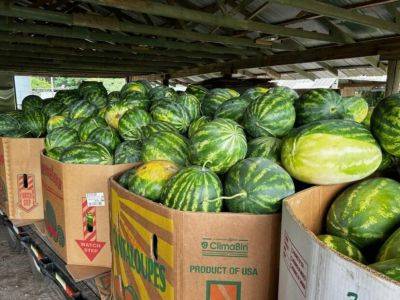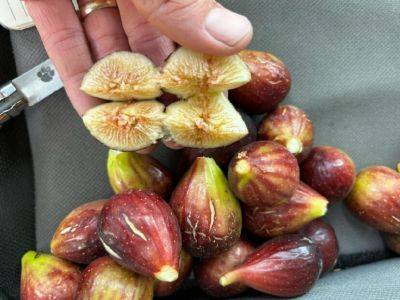Zack Snipes
SC Fruit and Vegetable Field Report – November 28, 2022
24.07.2023 - 11:53 / hgic.clemson.edu
Today’s update will be our final update of 2022. With things slowing down in the field, we will take some time to focus on other projects, and the Weekly Field Updates will resume in January.
We hope everyone has a safe and happy holiday season, and we’ll see you back in 2023!
Rob Last reports, “A little welcome rainfall over the weekend, allied to some warmth and sunshine, has improved the growth of strawberries. I believe it will be worthwhile for growers to utilize row covers for a month to ensure we achieve the thermal time accumulation. Brassica and leafy greens are looking good, with a little Alternaria leaf spot being found.
Zack Snipes reports, “We have some warmer and sunnier weather coming this week that should really push all of our crops. We are still behind on our growing degree days (GDD) for strawberries, but with the coming weather, we should accumulate a good many units this week. No matter how many GDD we get, if you do not protect your strawberries from deer, it won’t matter. Please protect your strawberry plants with a fence. I saw some beautiful crops on Edisto last week (broccoli, greens, lettuce, beets, carrots) with very little disease or insect damage. This is the perfect time of year for sprayer calibration. Most growers are shocked to find out how much money they are losing because their sprayers aren’t properly calibrated, causing them to misapply pesticides (incorrect nozzle, wrong pressure, clogged nozzles, not using adjuvants, etc.). Clemson Extension has just released “Spray Fundamentals”, an online course that covers how to spray better on-farm. This, folks, is the best stocking stuffer or white elephant gift a farmer could receive. Click here to give the gift you’ve all been waiting

SC Fruit and Vegetable Field Report November 23, 2020
Rob Last reports, “Strawberry crops continue to develop well with minimal pest and disease pressure so far. Fall vegetables are progressing towards the market. We continue to see pest pressure from caterpillars, and a few isolated aphids have been spotted during scouting. As we progress towards the holiday season, scouting of crops remains of vital importance to catch insect infestation and disease progression early for treatments to be effective.”
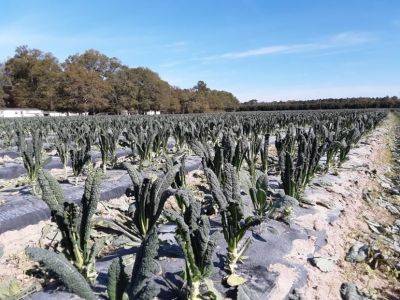
SC Fruit and Vegetable Field Report November 30, 2020
Zack Snipes reports, “After a long Thanksgiving nap, I was able to waddle out in the fields and look at some strawberries. We have had some really good strawberry growing weather especially considering most folks got their plants out somewhat late this year. We need some cold weather to slow them down a bit in places. I have seen a tiny bit of plant collapse and death in some spots within the fields. It is very important to send these plants into our lab to get a positive identification of the pathogen. Phytophthora crown rot and anthracnose crown rot can cause similar symptoms but are managed differently. For information on how to submit a sample during COVID times, click here. I am also keeping my eye on a good bit of leaf spotting in some fields to make sure it’s not the new disease, Neopestalotiopsis. I don’t think we have it yet, but being proactive is better than being reactive. More information on that disease can be found here.”

SC Fruit and Vegetable Field Report – November 8, 2021
Zack Snipes reports, “It feels like winter showed up this past week with cold, windy, gloomy days. Most, if not all of our strawberries have been planted. With the cool weather showing up and our later planting dates this year, some growers are opting to use lightweight row covers to push their plants along a little bit. A few things to remember if you opt to do this: use lightweight row covers, make sure all disease and insect issues are taken care of before putting the row covers on, and only leave them on for a few weeks. We want to encourage some growth of our plants, but we don’t want our plants getting too big and succulent going into the winter. I visited several farms this week with poor-quality fruit trees. A common thread between these plantings is planting depth. In our sandy soils, plants will sink over time, so as Phillip Carnley says, “plant them proud,” which means plant them higher than you think they should be planted. Over time, the plants will settle into the correct depth. Pecans, blueberries, and other crops will not grow roots from their trunks, so over time, the plant will rot, and pathogens will get into the plant when they are buried too deep.”

SC Fruit and Vegetable Field Report November 15, 2021
We are currently evaluating the SC Grower site to determine any necessary updates or upgrades to better serve our viewers. To help with this, we would love to have your feedback. This quick survey should take about 5 minutes to complete and is completely anonymous. Please take a minute to share some of your likes, dislikes, or suggestions for the SC Grower
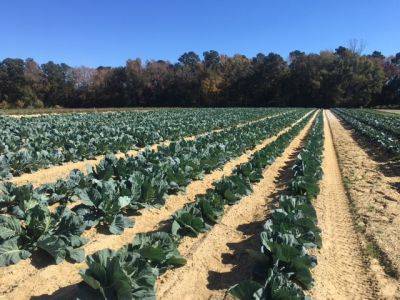
SC Fruit and Vegetable Field Report – November 29, 2021
Rob Last reports, “In our area, pest and disease pressure have reduced in response to cooler dryer conditions. Keep an eye on soil moisture and continue to regularly scout crops.”
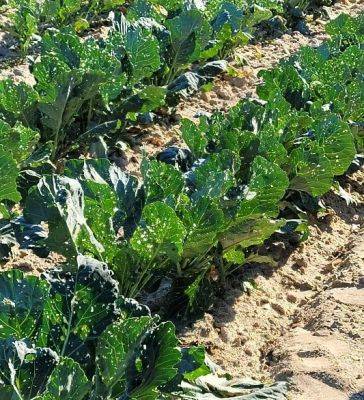
SC Fruit and Vegetable Field Report – November 22, 2021
Rob Last reports, “Crops are continuing to develop well with few insect or disease problems. The disease pressure may increase given the welcome rainfall forecast today. Please remember to scout regularly and thoroughly. Problems caught early are easier to manage.”
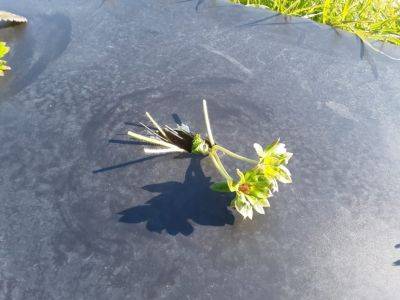
SC Fruit and Vegetable Field Report – January 31, 2022
Rob Last reports, “Pest and disease issues in the area remain very low; however, as temperatures rise, we expect activity to increase. Although it is quiet, it is still essential to continue to scout. Assessment of crops indicates that we have escaped the worst of any chill injury or loss of plants. Pruning of fruit crops continues while dormancy holds and labor begins to return to the area.”
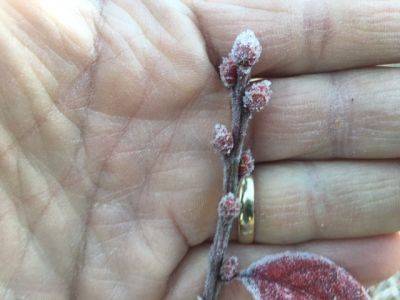
SC Fruit and Vegetable Field Report February 14, 2022
Rob Last reports, “Strawberries in the area look good, with some new leaf development emerging from the crown. Boron applications are being applied, either as a foliar application or through the drip system. Remember, we are looking to apply 1/8 lb. of boron per acre. Over application of boron can be phytotoxic and detrimental to the plants. Plans are also being made to begin fertigation applications later this month to aim for the first pick in early April. The initial target is to apply 5.25 lbs. N per acre. After the first application, a tissue test should be taken to refine fertility recommendations further. Please also remember we have the drip fertigation calculator to make the calculations more straightforward. Brassica transplants are going in the ground this week and are looking good. The pruning of peaches and perennial fruit is pretty much complete, and we await the arrival of spring.”
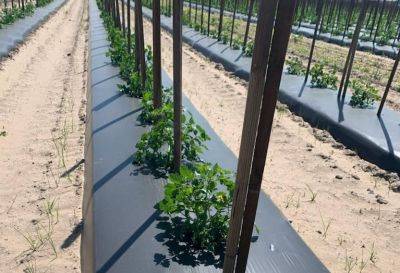
SC Fruit and Vegetable Field Report – April 18, 2022
Zack Snipes reports, “It has been a very windy spring. The winds are drying out our soils and beating up plants. I have looked at some tomatoes, and the ones that aren’t tied are wind-whipped, and the ones that are tied have callus tissue forming where the string is touching them. We have some beautiful lettuce and greens coming in right now, along with spring onions. I have also seen some squash coming in on farms that grew squash in high tunnels. Strawberry plants are still small and have very few blooms for this time of year. We are harvesting highbush blueberries in high volumes right now. I think we escaped more cold damage than previously expected.”
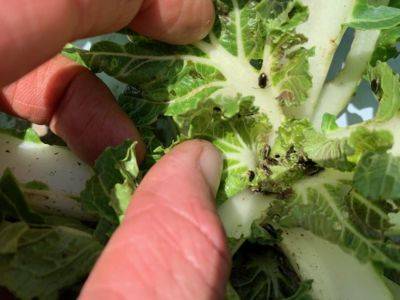
SC Fruit and Vegetable Field Report – May 31, 2022
Zack Snipes reports, “It seems like everything is coming in from the fields right now. We got some rain but could really use some more. I am seeing lots of aphids on a variety of crops (melons, cukes, eggplant). I am also seeing ladybird beetles and parasitized aphids in these fields, which means our predators are out there working for us. Bacterial wilt and Southern blight are starting to appear on tomatoes as well. Knowing the difference and preparing for next season’s crop is critical. It is getting hot and is still windy, so growers might consider adding one or more irrigation cycles to their fields. Remember that in our sandy soils, any irrigation event over an hour is just wasting water. More frequent 30-45 minute cycles are more efficient.”
